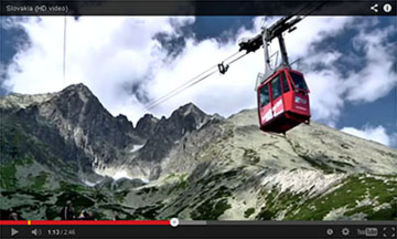Eat, pray and love... and watch out for a bucket of water!
Macs have been used by Slovak girls for ages, and Slovak men have experience in branch management before it became popular. Describing Slovak Easter traditions to a foreigner might sound like the success story of a startup. Until the moment you see the scene with your own eyes... Make your spring welcome unique, come to Slovakia and enjoy an extraordinary mix of ancient Slavic rituals and Christian customs!
Fast and furious? Not after you see the table bend over with delicacies
But once the fast is over, get ready to indulge in the festive Easter menu! Families prepare for this in advance, with each household having their own unique way of cooking and serving the dishes. A typical dish is potato salad with smoked ham, which is sliced thinly and served on Easter Sunday and Monday. Additionally, every skilled homemaker bakes at least three types of cakes or pastries, including a popular cake shaped like a lamb. Make sure to try the delightful local Easter treats such as "paska," a yeast-raised bread with a brioche-like flavor, and "hrudka," an egg cheese, which are sure to be finger-licking good!
Easter eggs here, there and everywhere
You can feast your eyes also on delicate works of craftsmanship known as "kraslice", which are popular symbols of Easter in Slovakia along with lambs, bunnies, and yellow chicks, that have become a symbol of life. Various techniques are used to decorate the eggs, including drawing with melted wax, painting, using wire or drilling decorative holes to create a lace-like effect. If you're interested in mastering this skill, you can participate in various workshops available throughout the country. Floral decorations made from catkins and golden rain are also very popular. People collect the branches and put them in the water, and then hang their kraslice and other decorations on them. With colourful ribbons hanging from everywhere, you will be in the mood for an unusual Easter Monday spectacle!
Ice bucket challenge? No, just Easter in Slovakia
On this day, boys all over Slovakia take buckets of water and go to the houses of single girls to splash them. The girls may even end up in a stream if they live near one. In certain areas, girls are symbolically whipped with canes made of willow branches, in a custom known as "šibačka" (whipping), while in others, they are bathed in water in a custom known as "oblievačka" (bathing). The origins of these traditions can be traced back to ancient pagan spring festivals, which aimed to ward off evil and assure the well-being of young women. The vitality of the branches was believed to flow into a woman's body, thus guaranteeing her fertility and beauty. But explain this to the poor girl who seeks the protection of a macintosh!
In many regions and larger cities, water buckets have been swapped out in favor of perfume, a water pistol, or a cup of water. In some villages, however, it's still common to spot young men carrying rattles and braided whips festooned with colorful ribbons while dressed in traditional folk outfits. According to the age-old custom, the ribbons on the cane indicate the number of young ladies and women that a boy has managed to soak or whip, with one ribbon being attached by each "victim." The funny part is that the boys are rewarded for their efforts with hand-painted or chocolate eggs, sweets or money, whereas adults are often given a drink of spirits. In some parts of Slovakia, the Tuesday following Easter Monday was a time when women and girls could exact their revenge by whipping and bathing men, which seemed very amusing.
Better to see something once
If you're curious about how Easter is celebrated in Slovakia, head over to the Slovak Village Museum in Martin, which is part of the Slovak National Museum (SNM). Visitors can witness live demonstrations of various traditional Slovak Easter customs dating back to ancient times.
Slovakia's ambiance during Easter is unparalleled. Don't miss out on the chance to try something different this year!























